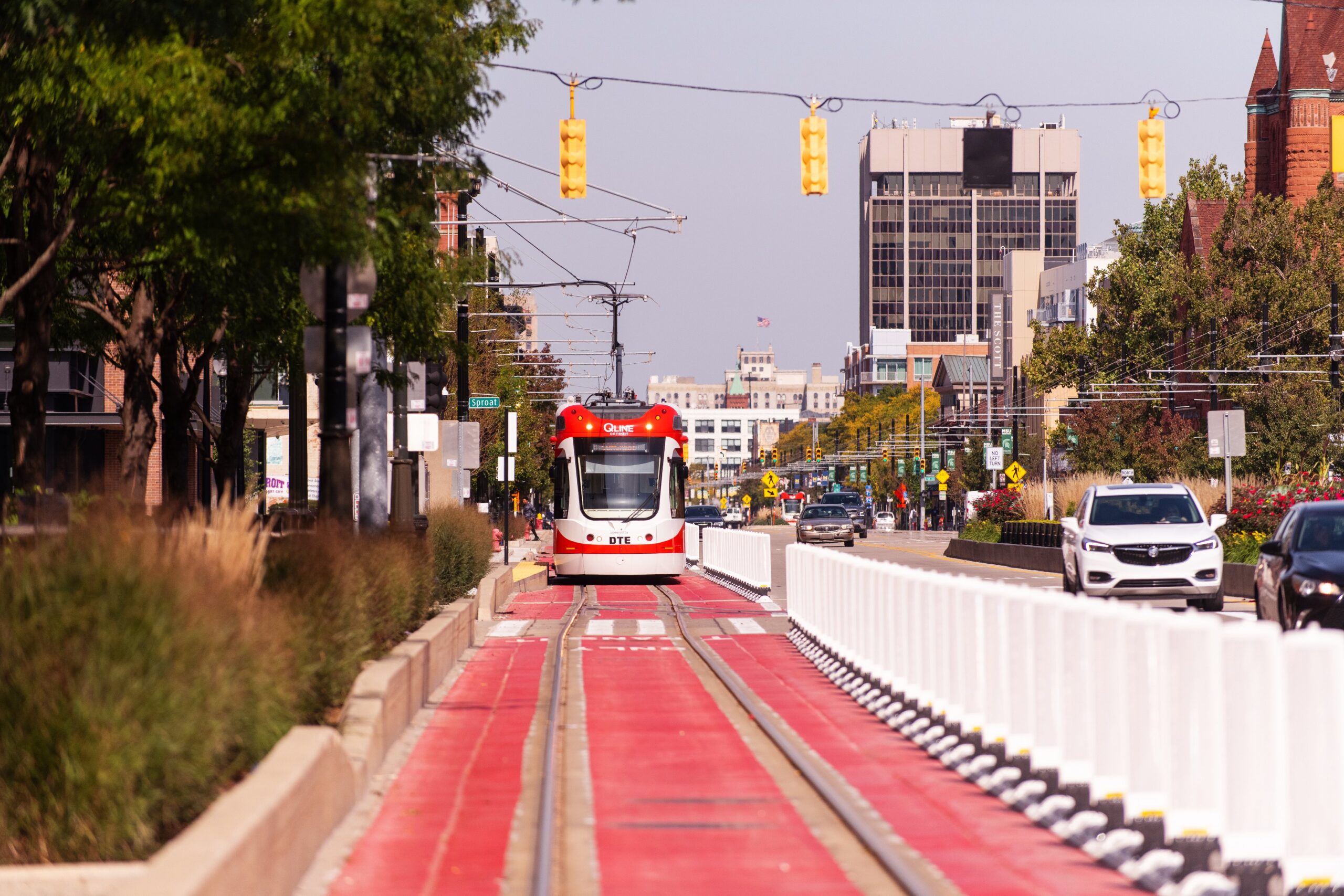Conectando comunidades a través de la inversión en corredores
Nuestra región se define por las líneas definidas y los nombres reconocibles de las calles de sus principales corredores: Woodward, Gratiot, Michigan, Grand River, Jefferson, Washtenaw y Van Dyke. Estos corredores son vías de paso para nuestros negocios, centros culturales y vecindarios, y se encuentran entre las vías de superficie más transitadas para todos los medios de transporte.
La inversión en transporte público en nuestros corredores mejorará la seguridad vial, facilitará los viajes y conectará a las personas con empleos, negocios y eventos. Mejores corredores se traducen en mejores vecindarios y una región más próspera.

Resumen
Durante más de una década, la RTA ha estudiado nuestros corredores para evaluar las condiciones existentes y determinar las mejoras más efectivas. La RTA ha identificado proyectos prioritarios a lo largo de los corredores y trabaja en conjunto con las comunidades locales, el estado y socios regionales para obtener financiación. Si bien se necesita una estrategia unificada de conectividad para guiar las obras en los corredores, pequeñas intervenciones pueden mejorar drásticamente la experiencia de los usuarios del transporte público, peatones y conductores que utilizan las vías.
Los corredores necesitan tanto planificación como asistencia de capital para prepararse para intervenciones modernas que los hagan más atractivos para los residentes, las empresas y los visitantes.
Mejoras
- Priorización del tránsito: Prioridad de señal, carriles exclusivos o flexibles, saltos de cola, extensiones de aceras
- Centros de movilidad y mejoras en las paradas de autobús:Refugios, aparcabicicletas, llaves de aceras, bancos, pasos de peatones, señalización y navegación, iluminación.
- Desarrollo comunitario y seguridad:Arte público, embellecimiento, espacios verdes alrededor de las paradas
Trabajo en curso
La RTA completó recientemente un marco para mejorar la infraestructura de transporte público en los principales corredores de la región. Nuestro marco ACTÚA AHORA sugiere elementos similares a los de los autobuses rápidos en las paradas de los corredores para agilizar el transporte público y mejorar la seguridad en las calles.
Alternativas preferidas localmente
La RTA realizó estudios en cinco corredores principales y presentó sus hallazgos como Alternativas Localmente Preferidas (ALP), que son soluciones y mejoras propuestas basadas en el análisis de las condiciones existentes y una amplia participación de la comunidad y las partes interesadas. Las ALP identificaron la necesidad de mejorar las paradas de transporte público y rediseñar las calles para satisfacer las necesidades actuales y futuras de las comunidades.
Desarrollo Orientado a la Movilidad (2020)
En 2019 y 2020, la RTA elaboró un informe de investigación sobre Desarrollo Orientado a la Movilidad (DMO) para la región. El trabajo exploró a fondo cómo el transporte público ha establecido una base de conocimiento sobre cómo ha impactado y podría contribuir al desarrollo de la vivienda y el crecimiento económico. Mediante una serie de investigaciones exhaustivas y la participación comunitaria, la RTA desarrolló un Informe de Análisis de Mercado, una Estrategia de Vivienda Asequible y un Plan de Acción.
Política e investigación
Para obtener más información sobre el papel del transporte público en el crecimiento sostenible, la creación de empleo, la vivienda asequible y las comunidades saludables, visite nuestra página de Políticas e Investigación.


